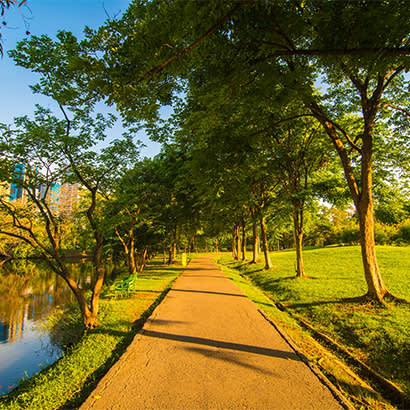
For an enhanced digital experience, read this story in the ezine.
In previous columns, I have reported empirical evidence demonstrating that in most contexts, parks, trails, golf courses and open spaces have a positive impact on property values. However, the development community frequently expresses a competing view on how land should be used and so the question often becomes: Is an investment in park and open space likely to yield a better return than if the land were used for development?
The prevailing conventional wisdom among many elected officials and taxpayers is that development is the “highest and best use” of vacant land for increasing municipal revenues. Developers claim their projects “pay for themselves and then some.” They exhort that their developments will increase a community’s tax base and lower each existing resident’s property tax payments. Thus, while it may be accepted that a park is likely to contribute extra increments of property tax from surrounding property to the local city treasury, developers frequently argue that much larger property tax revenues would accrue if the space was built out with homes.
However, there are two sides to a balance sheet and the developers’ perspective conveniently omits the additional capital and operating costs of providing schools, sewers, storm drainage, transportation, roads, water, fire and police protection, park and recreation facilities, libraries, general government offices, electricity, gas and solid waste disposal. If a community grows by 10 percent, these additional costs fall far short of the property and sales tax revenues the new 10 percent of residents generate, so most of these costs are paid by the 90 percent of existing taxpayers; even though they are adequately serviced by the existing infrastructure.
The Empirical Evidence
In the late 1970s and 1980s, standardized procedures emerged for undertaking Cost of Community Services (COCS) analyses. In the decades since their introduction, this analytical tool has become increasingly sophisticated and has been used by many local governments to analyze the sources and expenditures of taxation revenues.
The analyses identify three different land uses in a community — residential, commercial/industrial and agricultural/forest/open space — and recognize that they produce different amounts of tax revenues and cost different amounts to service. The American Farmland Trust reports the findings of 151 COCS studies, undertaken by more than 40 different research teams in 26 different states (see Figure 1).
For every $1 million received in revenues from commercial/industrial and farm/forest/open space, the median amounts these communities had to expend to service these sectors were only $300,000 and $370,000, respectively. In contrast, for every $1 million received in revenues from residential developments, the median amount the communities had to expend to service them was $1.16 million.
While the supposed benefits of growth are loudly and widely proclaimed by a community’s growth coalition, its associated costs are rarely discussed. The results from these studies refute the notion that development of land is invariably its “highest and best use,” which, sometimes, thwarts park and open space initiatives (see Figure 2).
Implications for Parks and Open Spaces
Residential development is the most common alternate use proposed for potential park and open space lands. In those situations, the key fiscal impact issue becomes: Will the net costs of purchasing, maintaining and operating the land as a park or as open space be greater than the net costs associated with servicing a residential development that may be constructed on that site? The answer is usually “no.”
The following example suggests that if the annual cost of maintaining and operating a natural park is lower than $180,000, then it is likely to be less of a financial burden to the community than if the 50-acre site is developed for houses.
On a 50-acre site, assume a density of three homes per acre and a property tax rate (school district, city, county, etc.) of 2.5 percent of market value on homes valued at $300,000.
Thus, annual property tax revenue equals $1,125,000 (50 x 3 x $7,500).
Assume that the cost of servicing these residences is 16 percent higher than the property taxes received (see Figure 1). Thus, the annual net loss to the community for servicing this residential development is $180,000 (0.16 x $1,125,000).
If the operation and maintenance cost of the 50-acre natural park is lower than $180,000 per year, then it is a less expensive option to service than the housing development on the same site.
Further, investment in parks and open spaces does not incur the externality costs that accompany residential development, such as congestion, crime, pollution, infrastructure deterioration and changes in community character.
The economic costs and benefits of parks and open spaces have largely been ignored in planning studies in the past. These results demonstrate the need to include these spaces in a community’s fiscal and economic discourse. By showing the relative fiscal strength compared to residential development, park advocates can refute the notion that parklands are a drain on local resources. A strategy of conserving parks and open spaces is not contrary to a community’s economic health, but rather is an integral part of it.
The intent is not to argue that parks and open spaces are a superior option to housing. People have to live somewhere. There cannot be a national moratorium on residential development. The goal is not to prevent growth, but to encourage a balance between development and open spaces, which tends to get lost without these types of analyses.
John L. Crompton, Ph.D., is a University Distinguished Professor, Regents Professor and Presidential Professor for Teaching Excellence in the Department of Recreation, Park and Tourism Sciences at Texas A&M University and an elected Councilmember for the City of College Station.

